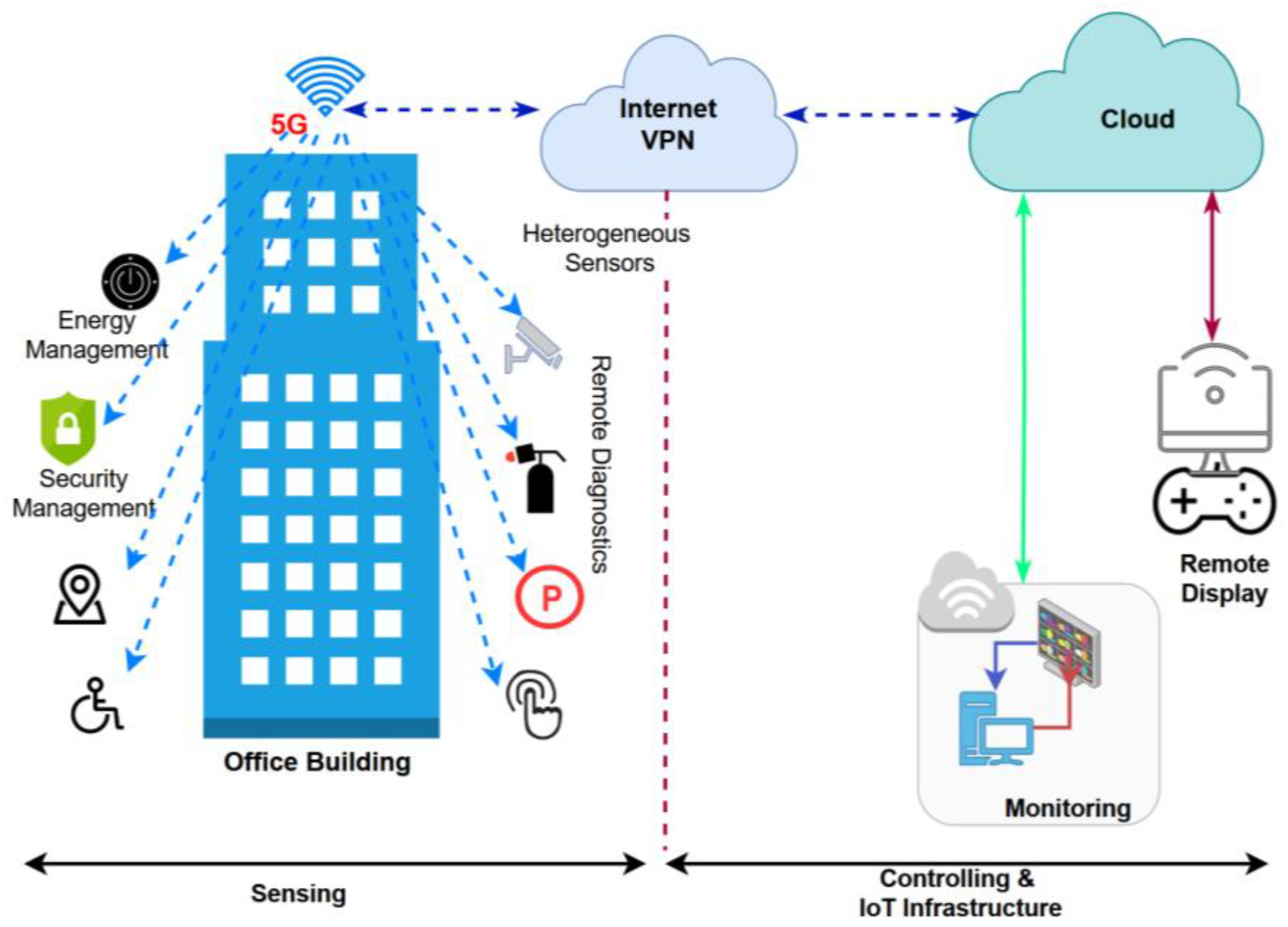Smart Buildings Using Web of Things with .NET Core: A Framework for Inter-Device Connectivity and Secure Data Transfer
Abstract
1. Introduction
2. Web of Things
3. NET Core
3.1. Security in .NET Core
3.2. Performance in .NET Core
3.3. Comparison of .NET Core with Other Programming Languages
4. Smart Building System Architecture
4.1. Hardware Used in the Smart Building System
4.2. Software Developed for the Smart Building System
4.2.1. Rest API
4.2.2. Worker Service
4.3. Web Application Development for Smart Building System
5. Evaluation and Testing of the Smart Building System
6. Conclusions and Future Work
Author Contributions
Funding
Data Availability Statement
Conflicts of Interest
References
- Han, K.; Zhang, J. Energy-Saving Building System Integration with a Smart and Low-Cost Sensing/Control Network for Sustainable and Healthy Living Environments: Demonstration Case Study. Energy Build. 2020, 214, 109861. [Google Scholar] [CrossRef]
- Gzar, D.A.; Mahmood, A.M.; Al-Adilee, M.K.A. Recent Trends of Smart Agricultural Systems Based on Internet of Things Technology: A Survey. Comput. Electr. Eng. 2022, 104, 108453. [Google Scholar] [CrossRef]
- Poyyamozhi, M.; Murugesan, B.; Rajamanickam, N.; Shorfuzzaman, M.; Aboelmagd, Y. IoT—A Promising Solution to Energy Management in Smart Buildings: A Systematic Review, Applications, Barriers, and Future Scope. Buildings 2024, 14, 3446. [Google Scholar] [CrossRef]
- El-Afifi, M.I.; Sedhom, B.E.; Padmanaban, S.; Eladl, A.A. A Review of IoT-Enabled Smart Energy Hub Systems: Rising, Applications, Challenges, and Future Prospects. Renew. Energy Focus 2024, 51, 100634. [Google Scholar] [CrossRef]
- Duarte, F. 60+ Amazing IoT Statistics (2024–2030). Exploding Topics, 19 September 2024. Available online: https://explodingtopics.com/blog/iot-stats (accessed on 19 January 2025).
- Verma, A.; Prakash, S.; Srivastava, V.; Kumar, A.; Mukhopadhyay, S.C. Sensing, Controlling, and IoT Infrastructure in Smart Building: A Review. IEEE Sens. J. 2019, 19, 9036–9046. [Google Scholar] [CrossRef]
- Jitta, A.; Sai, A.; Manda, V.K.; Tarnanidis, T. Geospatial Technologies for Smart Cities. In Recent Trends in Geospatial AI; IGI Global Scientific Publishing: Hershey, PA, USA, 2025; pp. 103–136. [Google Scholar] [CrossRef]
- Perisic, A.; Perisic, B. Towards a Digital Transformation Hyper-Framework: The Essential Design Principles and Components of the Initial Prototype. Appl. Sci. 2025, 15, 611. [Google Scholar] [CrossRef]
- Chodorek, A.; Chodorek, R.R. Web Real-Time Communications-Based Unmanned-Aerial-Vehicle-Borne Internet of Things and Stringent Time Sensitivity: A Case Study. Sensors 2025, 25, 524. [Google Scholar] [CrossRef] [PubMed]
- Billanes, J.D.; Ma, Z.G.; Jørgensen, B.N. Data-Driven Technologies for Energy Optimization in Smart Buildings: A Scoping Review. Energies 2025, 18, 290. [Google Scholar] [CrossRef]
- Padhiary, M.; Roy, P.; Roy, D. The Future of Urban Connectivity: AI and IoT in Smart Cities. In Sustainable Smart Cities and the Future of Urban Development; IGI Global Scientific Publishing: Hershey, PA, USA, 2025; p. 34. [Google Scholar] [CrossRef]
- Almutairi, R.; Bergami, G.; Morgan, G. Advancements and Challenges in IoT Simulators: A Comprehensive Review. Sensors 2024, 24, 1511. [Google Scholar] [CrossRef]
- Miller, M.; Byfield, R.; Crosby, M.; Lin, J. Networked Wearable Sensors for Monitoring Health and Activities of an Equine Herd: An IoT Approach to Improve Horse Welfare. IEEE Sens. J. 2024, 24, 29211–29218. [Google Scholar] [CrossRef]
- Ali, J.; Zafar, M.H.; Hewage, C.; Hassan, S.R.; Asif, R. The Advents of Ubiquitous Computing in the Development of Smart Cities—A Review on the Internet of Things (IoT). Electronics 2023, 12, 1032. [Google Scholar] [CrossRef]
- Boles, C.; Meyer, S.J.; Phillips, M. IoT Data Standards Provide the Foundation for Smart Buildings; Intel White Paper: Santa Clara, CA, USA, 2016; Available online: https://www.intel.com/content/dam/www/public/us/en/documents/white-papers/iot-data-standards-provide-the-foundation-for-smart-buildings-paper.pdf (accessed on 20 January 2025).
- Zahid, M.; Bharati, T.S. Empowering IoT Networks. In Artificial Intelligence for Blockchain and Cybersecurity Powered IoT Applications; CRC Press: Boca Raton, FL, USA, 2025; p. 99. [Google Scholar]
- Nagajayanthi, B. Decades of Internet of Things Towards Twenty-First Century: A Research-Based Introspective. Wirel. Pers. Commun. 2022, 123, 3661–3697. [Google Scholar] [CrossRef]
- IEEE 802.11. Available online: https://www.ieee802.org/11/ (accessed on 19 January 2025).
- IEEE 802.15.4. Available online: https://standards.ieee.org/ieee/802.15.4/7029/ (accessed on 19 January 2025).
- ISO/IEC 14543-3-10:2020; Information Technology—Home Electronic Systems (HES) Architecture. ISO: Geneva, Switzerland, 2020.
- Sowmya, G.; Sridevi, R.; Rao, K.S.; Shiramshetty, S.G. The Role of Blockchain in Cyber Physical Systems. In Navigating Cyber-Physical Systems With Cutting-Edge Technologies; IGI Global Scientific Publishing: Hershey, PA, USA, 2025; pp. 1–36. [Google Scholar]
- Khadse, M.A.; Dakhane, D.M. A Review on Network Covert Channel Construction and Attack Detection. Concurr. Comput. Pract. Exp. 2025, 37, e8316. [Google Scholar] [CrossRef]
- Martín Toral, I.; Calvo, I.; Villar, E.; Gil-García, J.M.; Barambones, O. Introducing Security Mechanisms in OpenFog-Compliant Smart Buildings. Electronics 2024, 13, 2900. [Google Scholar] [CrossRef]
- Sambandan, D.; Thirupathi, D. Towards a Unified Management Interface for 5G Sensor Networks: Interoperability between Yet Another Next Generation and Open Platform Communication Unified Architecture. Sensors 2024, 24, 6231. [Google Scholar] [CrossRef] [PubMed]
- Hu, Y.; Lin, X.; Wang, H.; He, Z.; Yu, X.; Zhang, J.; Yang, Q.; Xu, Z.; Guan, S.; Fang, J.; et al. Wafer-Scale Computing: Advancements, Challenges, and Future Perspectives. IEEE Circuits Syst. Mag. 2024, 24, 52–81. [Google Scholar] [CrossRef]
- Mezenner, I.; Bouyakoub, S.; Bouyakoub, F.M. S2O: A Smart Objects Orchestrator Framework Based on the Web of Things. Sci. Comput. Program. 2024, 236, 103130. [Google Scholar] [CrossRef]
- Singh, P.; Rathee, G.; Kerrache, C.A.; Bilal, M.; Calafate, C.T.; Wang, H. AI-Based Learning Model for Sociocybernetic Systems in Web of Things: An Efficient and Accurate Decision-Making Procedure. IEEE Syst. Man Cybern. Mag. 2024, 10, 40–48. [Google Scholar] [CrossRef]
- Shehu Yalli, J.; Hilmi Hasan, M.; Abubakar Badawi, A. Internet of Things (IoT): Origins, Embedded Technologies, Smart Applications, and Its Growth in the Last Decade. IEEE Access 2024, 12, 91357–91382. [Google Scholar] [CrossRef]
- El Ghati, O.; Alaoui-Fdili, O.; Chahbouni, O.; Alioua, N.; Bouarifi, W. Artificial Intelligence-Powered Visual Internet of Things in Smart Cities: A Comprehensive Review. Sustain. Comput. Inform. Syst. 2024, 43, 101004. [Google Scholar] [CrossRef]
- Lakshminarayana, S.; Praseed, A.; Thilagam, P.S. Securing the IoT Application Layer from an MQTT Protocol Perspective: Challenges and Research Prospects. IEEE Commun. Surv. Tutor. 2024, 26, 2510–2546. [Google Scholar] [CrossRef]
- Guinard, D.; Trifa, V.; Mattern, F.; Wilde, E. From the Internet of Things to the Web of Things: Resource-Oriented Architecture and Best Practices. In Architecting the Internet of Things; Uckelmann, D., Harrison, M., Michahelles, F., Eds.; Springer: Berlin/Heidelberg, Germany, 2011; pp. 97–129. [Google Scholar] [CrossRef]
- Wilde, E. Putting Things to REST. 2007. Available online: https://example.com (accessed on 10 October 2024).
- Seeger, B.; Stehr, E.V.; Bruns, T. Python-Based Development Libraries and Web Applications to Process and Store Data Using a JSON Representation XML-DCC. Meas. Sens. 2025, 101480. [Google Scholar] [CrossRef]
- Akiyoshi, S.; Taenaka, Y.; Tsukamoto, K.; Lee, M. Content Search Method Utilizing the Metadata Matching Characteristics of Both Spatio-Temporal Content and User Request in the IoT Era. IEICE Trans. Commun. 2024, 107, 163–172. [Google Scholar] [CrossRef]
- Sulistyanto, M.P.T.; Febriawan, E.; Sulistiyowati, I. Web of Things to Control Planting Seeds and Watering Plants for Indoor Smart Farm. In Proceedings of the IOP Conference Series: Materials Science and Engineering, Yogyakarta, Indonesia, 12 March 2021; IOP Publishing: Bristol, UK; Volume 1098, p. 052109. [Google Scholar]
- Mezenner, I.; Bouyakoub, S.; Bouyakoub, F.M.H. Towards a Web of Things-Based System for a Smart Hospital. In Proceedings of the 2020 2nd International Workshop on Human-Centric Smart Environments for Health and Well-being (IHSH), Paris, France, 27–28 February 2021; pp. 22–27. [Google Scholar]
- Hwang, C.E.; Lee, S.H.; Jeong, J.W. VisKit: Web-Based Interactive IoT Management with Deep Visual Object Detection. J. Sens. Actuator Netw. 2019, 8, 12. [Google Scholar] [CrossRef]
- TechEmpower. Web Framework Benchmarks, 2021. Available online: https://www.techempower.com/benchmarks/ (accessed on 19 March 2023).
- Seth, D.; Satputaley, S.S.; Rehman, M.A.A.; Bhende, A.R. (Eds.) Technological Innovations & Applications in Industry 4.0: Challenges and Way Ahead (ICTIA-2024); CRC Press: Boca Raton, FL, USA, 2024; ISBN 9781032937847. [Google Scholar] [CrossRef]
- McFarlane, D.; Hawkridge, G.; Kaiser, J.; Mukherjee, A.; Terrazas, G. Progress Towards Low-Cost Industrial Digitalisation for SMEs. IFAC-PapersOnLine 2024, 58, 825–830. [Google Scholar] [CrossRef]
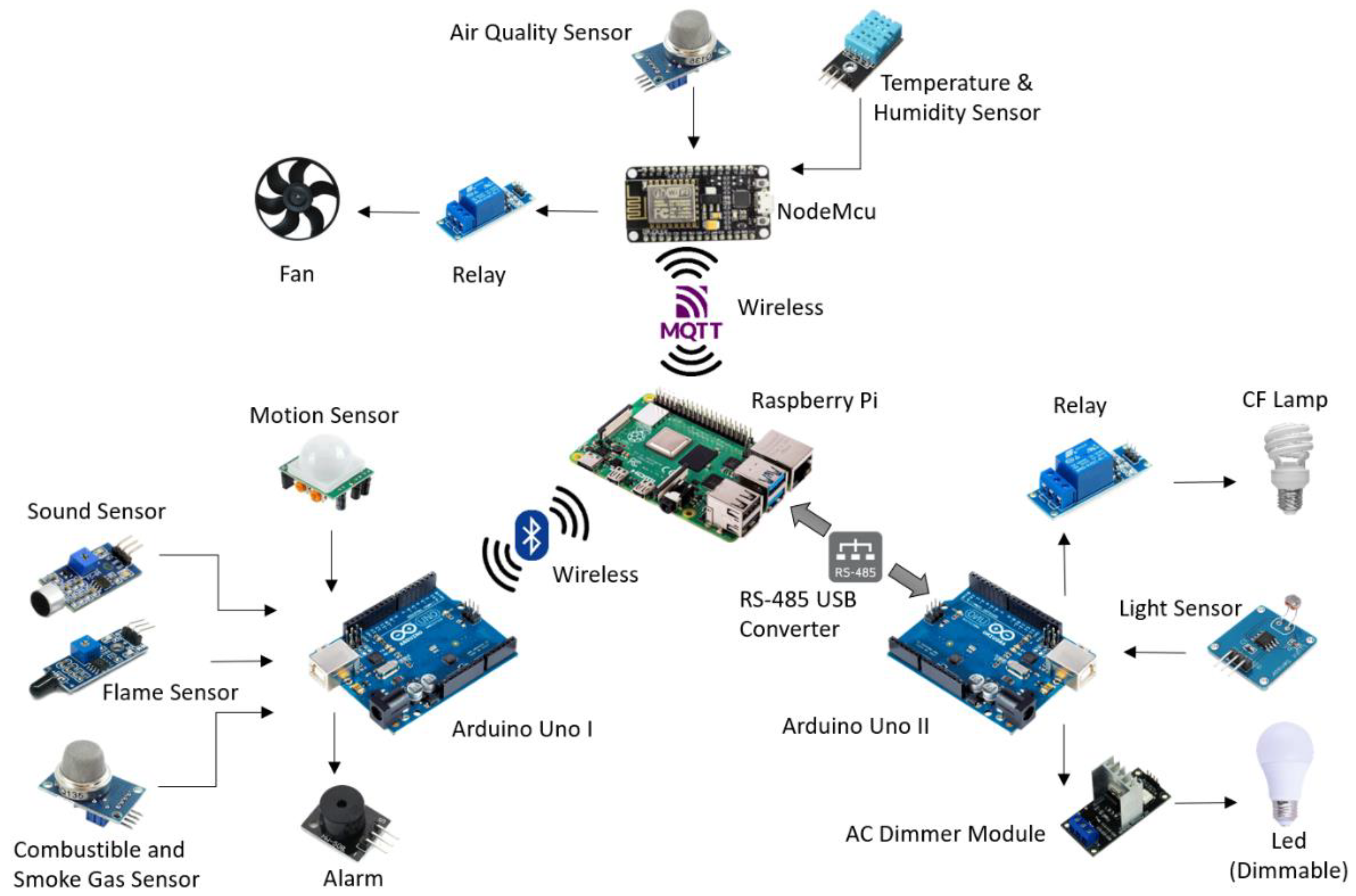
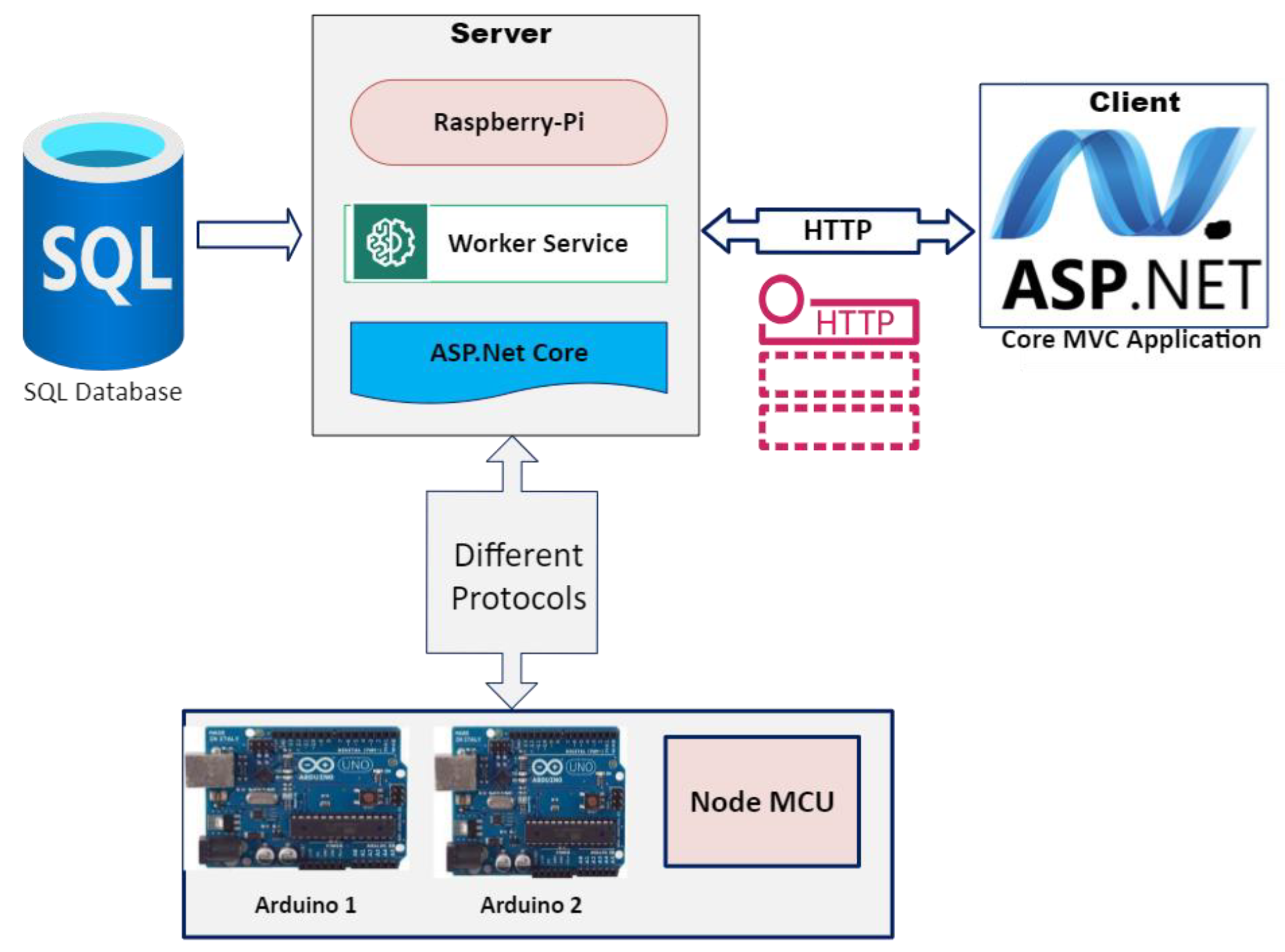
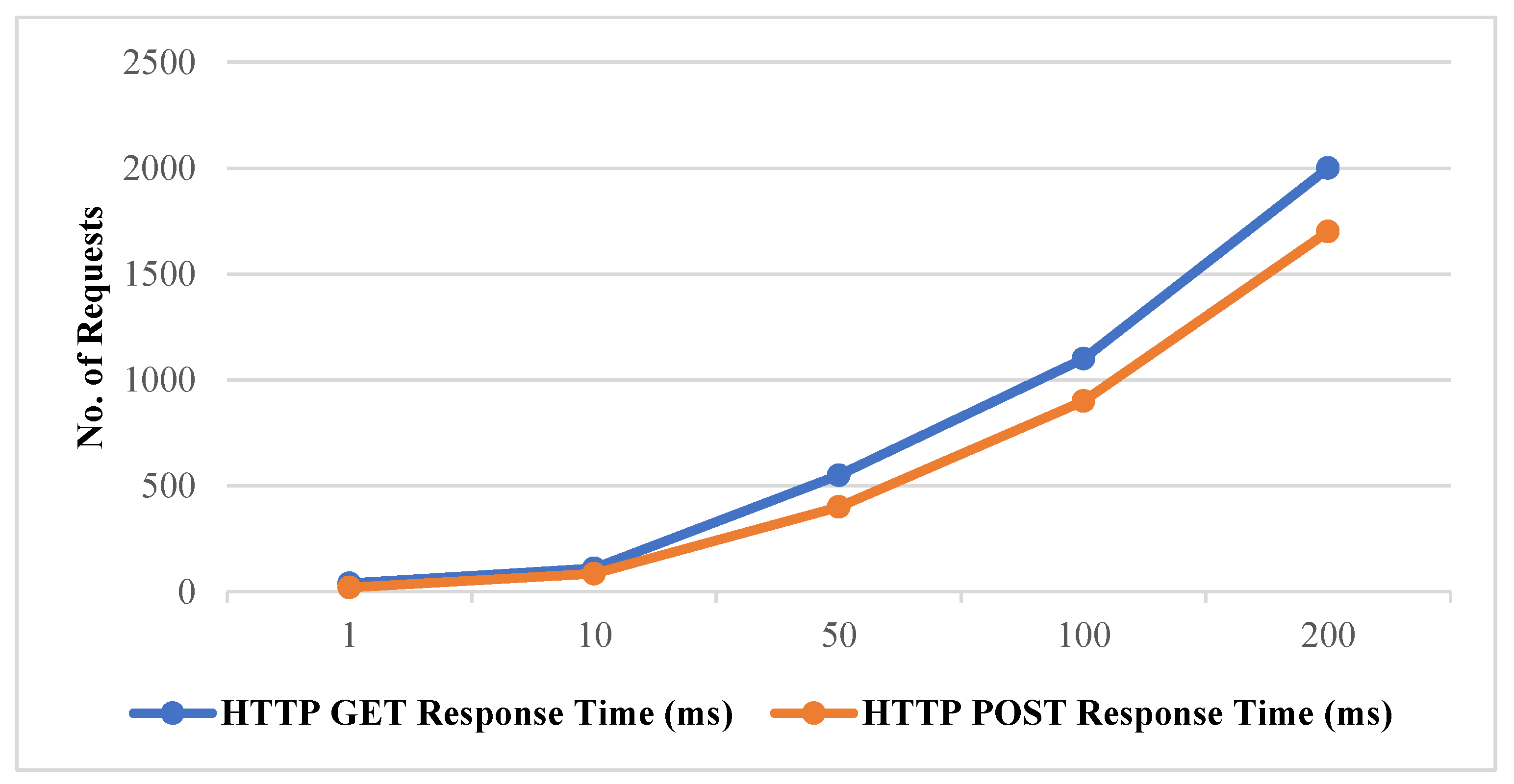
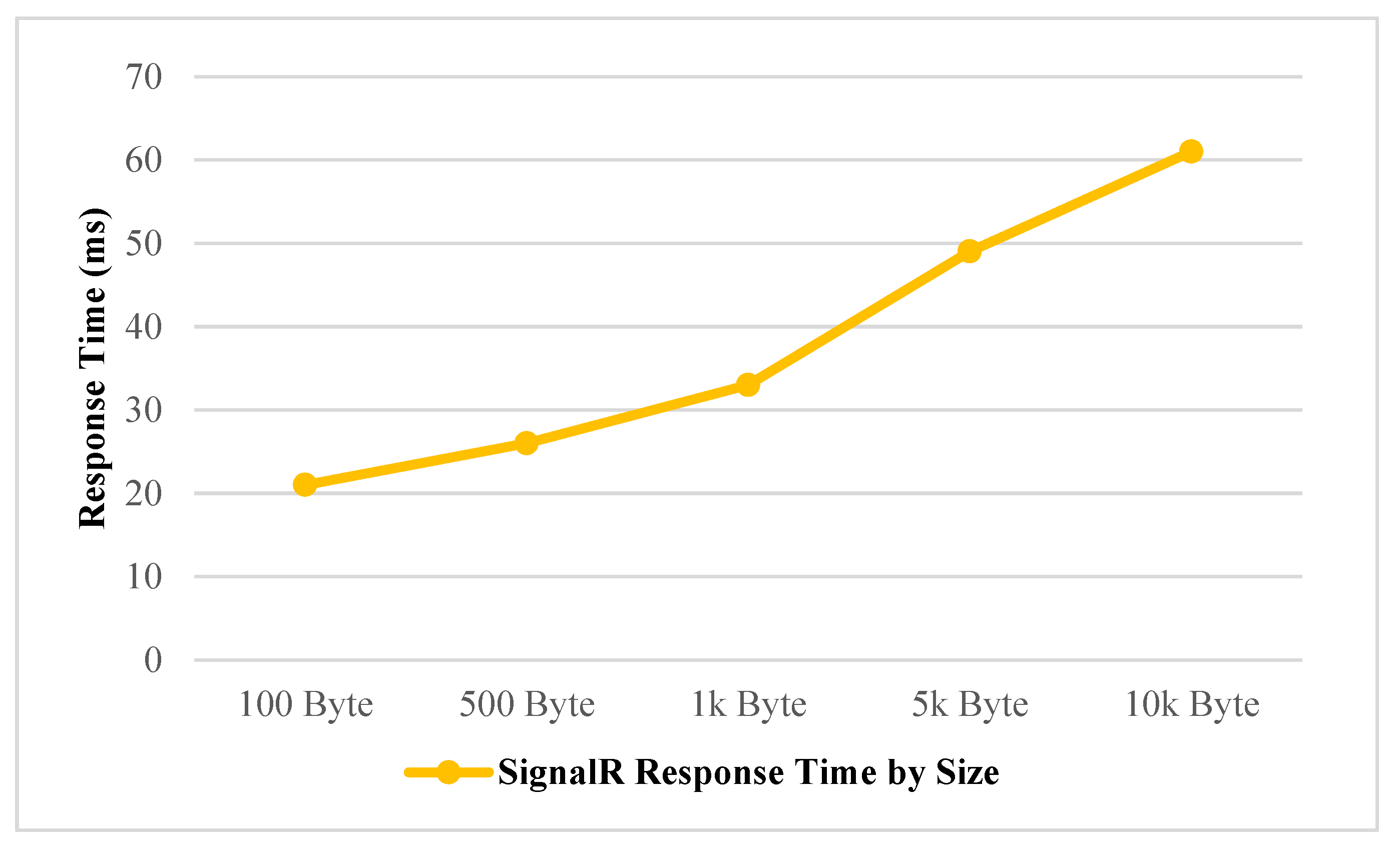
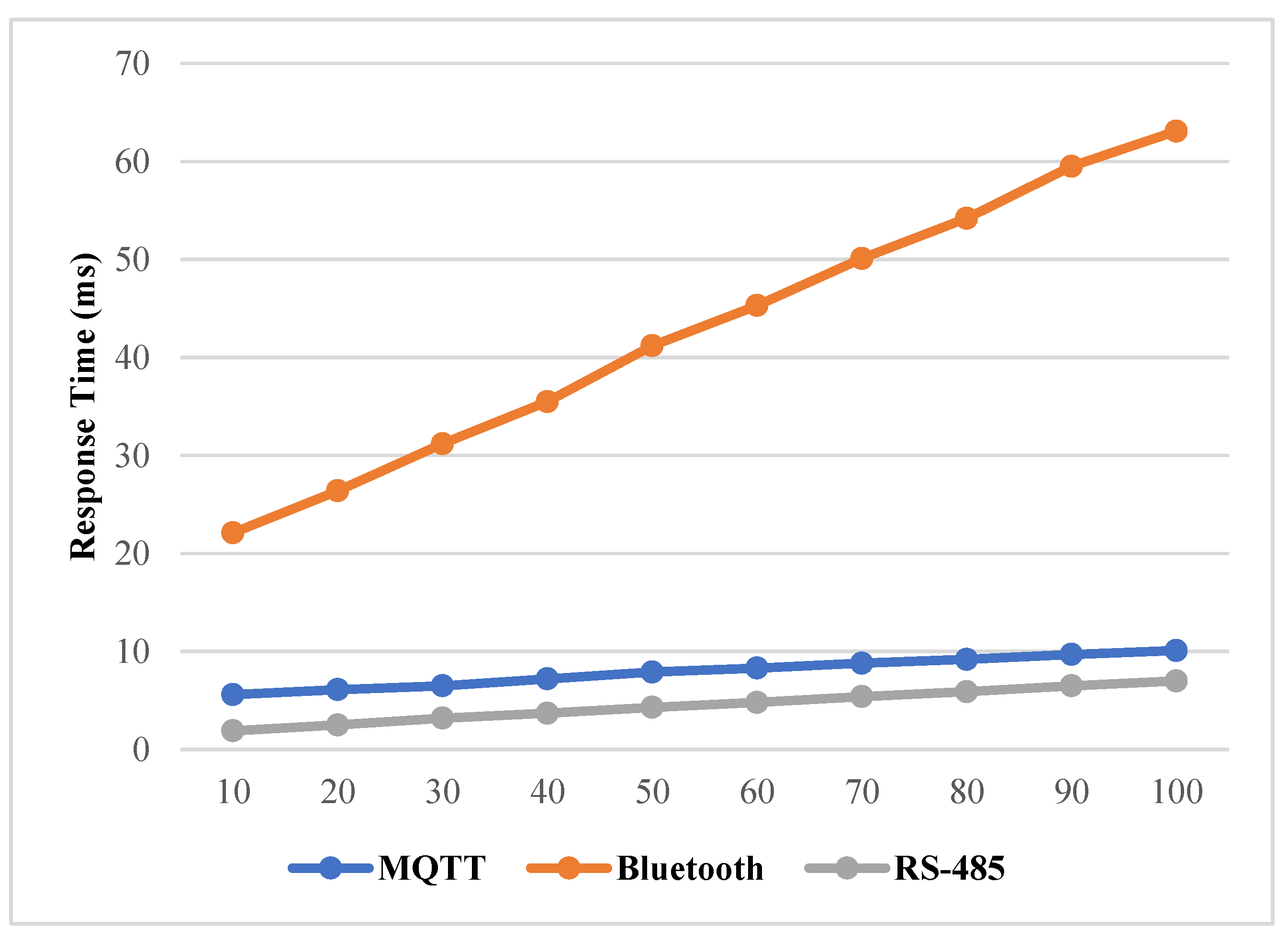
| Period | Key Developments | Application Areas | Challenges and Opportunities |
|---|---|---|---|
| 2000–2010 | The foundations of IoT were established, with advancements in wireless communication capabilities. | HVAC; basic security systems | Limited technological infrastructure; restricted device connectivity |
| 2010–2020 | Rapid growth in the number of IoT devices and the emergence of the smart building concept. | Lighting automation, smart energy management, remote access | Device heterogeneity; data security concerns |
| 2020–2025 | Integration of IoT devices and development of standards; adoption of frameworks such as the WoT. | Advanced building management systems; user-focused smart applications | Protocol compatibility, scalability, and data privacy issues |
| 2025 and beyond | Large-scale adoption of IoT devices; integration with smart cities. | Energy efficiency optimization; AI-powered building automation | Big data analytics, environmentally sustainable architecture, and opportunities for new business models |
| Standard | Description | Application Areas |
|---|---|---|
| IEEE 802.11 [18] | Wireless Local Area Network (Wi-Fi) standard enabling fast data transfer for IoT devices | Security systems, HVAC, lighting control |
| IEEE 802.15.4 [19] | Low-data-rate wireless communication protocol forming the basis of Zigbee and Thread. | Sensor networks, smart home devices |
| Zigbee Alliance | Low-power and reliable IoT protocol. | Lighting automation, energy management |
| BACnet | Data communication protocol for building automation systems. | HVAC, lighting, fire alarm systems |
| MQTT | Lightweight messaging protocol for low-bandwidth IoT data exchange. | HVAC, remote monitoring, and control |
| CoAP | REST-based protocol designed for constrained bandwidth environments. | Sensor devices, energy efficiency applications |
| ISO/IEC 14543-3 [20] | Standard protocol for home and building automation (KNX-based). | Lighting, HVAC, energy management |
| Criterion | .NET Core | Java | Python | Node.js |
|---|---|---|---|---|
| Performance | High, excels in JSON serialization | Stable, benefits from JVM optimizations | Moderate, less efficient for CPU-intensive tasks | Strong, particularly in I/O operations |
| Scalability | High, supports asynchronous programming | High, supported by a large community | Moderate, mainly focused on data analytics | High, leverages asynchronous event loops |
| Security | Built-in authentication and encryption | Strong, widely used in enterprise applications | Relies on external libraries for security | Good, dependent on Node.js libraries |
| Community Support | Strong, backed by Microsoft and open-source contributors | Extensive, with long-standing popularity | Broad, primarily in data science | Widespread, favored in web development |
Disclaimer/Publisher’s Note: The statements, opinions and data contained in all publications are solely those of the individual author(s) and contributor(s) and not of MDPI and/or the editor(s). MDPI and/or the editor(s) disclaim responsibility for any injury to people or property resulting from any ideas, methods, instructions or products referred to in the content. |
© 2025 by the authors. Licensee MDPI, Basel, Switzerland. This article is an open access article distributed under the terms and conditions of the Creative Commons Attribution (CC BY) license (https://creativecommons.org/licenses/by/4.0/).
Share and Cite
Ekren, N.; Sensoy, M.; Akinci, T.C. Smart Buildings Using Web of Things with .NET Core: A Framework for Inter-Device Connectivity and Secure Data Transfer. Information 2025, 16, 123. https://doi.org/10.3390/info16020123
Ekren N, Sensoy M, Akinci TC. Smart Buildings Using Web of Things with .NET Core: A Framework for Inter-Device Connectivity and Secure Data Transfer. Information. 2025; 16(2):123. https://doi.org/10.3390/info16020123
Chicago/Turabian StyleEkren, Nazmi, Mehmet Sensoy, and Tahir Cetin Akinci. 2025. "Smart Buildings Using Web of Things with .NET Core: A Framework for Inter-Device Connectivity and Secure Data Transfer" Information 16, no. 2: 123. https://doi.org/10.3390/info16020123
APA StyleEkren, N., Sensoy, M., & Akinci, T. C. (2025). Smart Buildings Using Web of Things with .NET Core: A Framework for Inter-Device Connectivity and Secure Data Transfer. Information, 16(2), 123. https://doi.org/10.3390/info16020123






